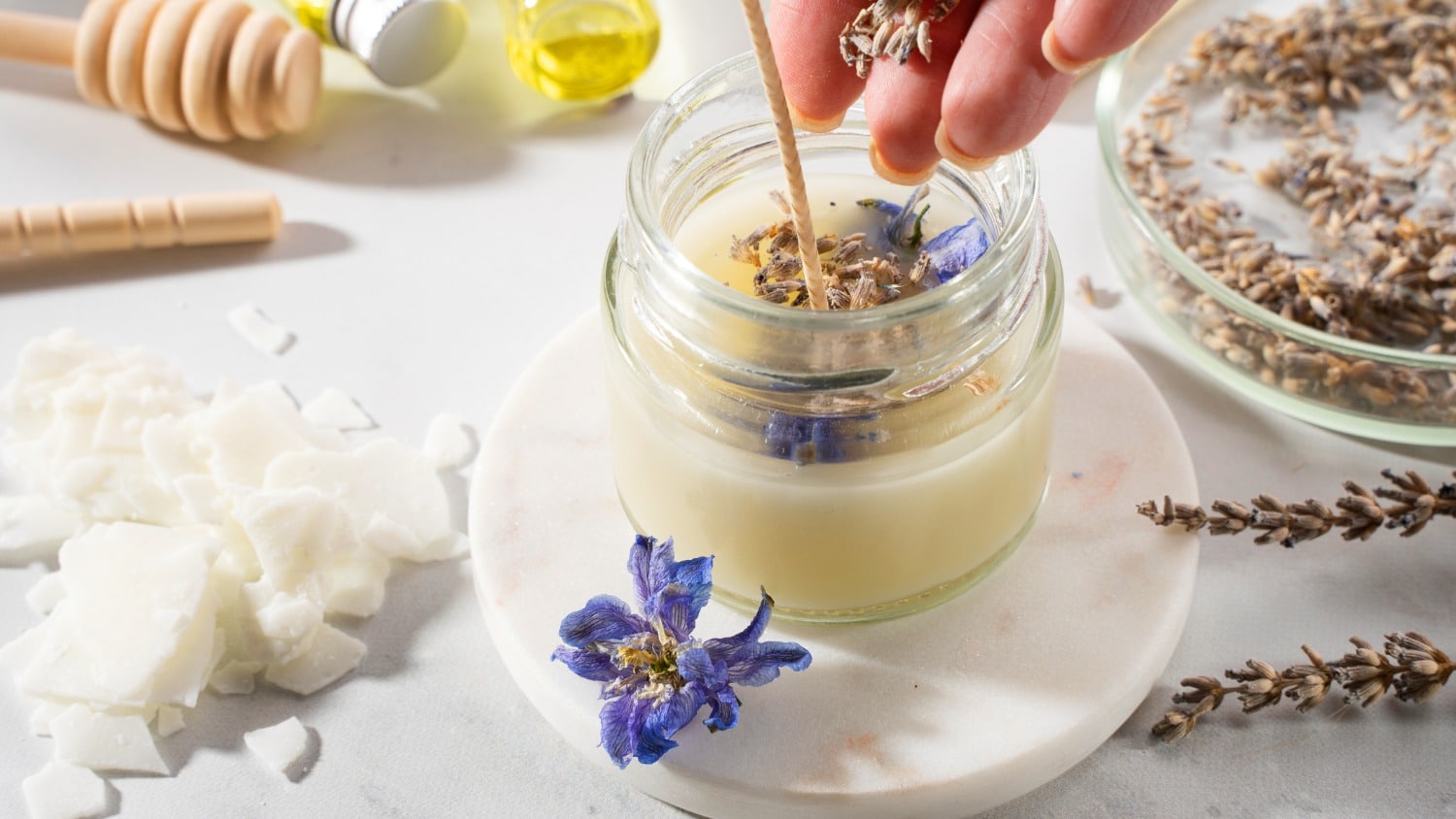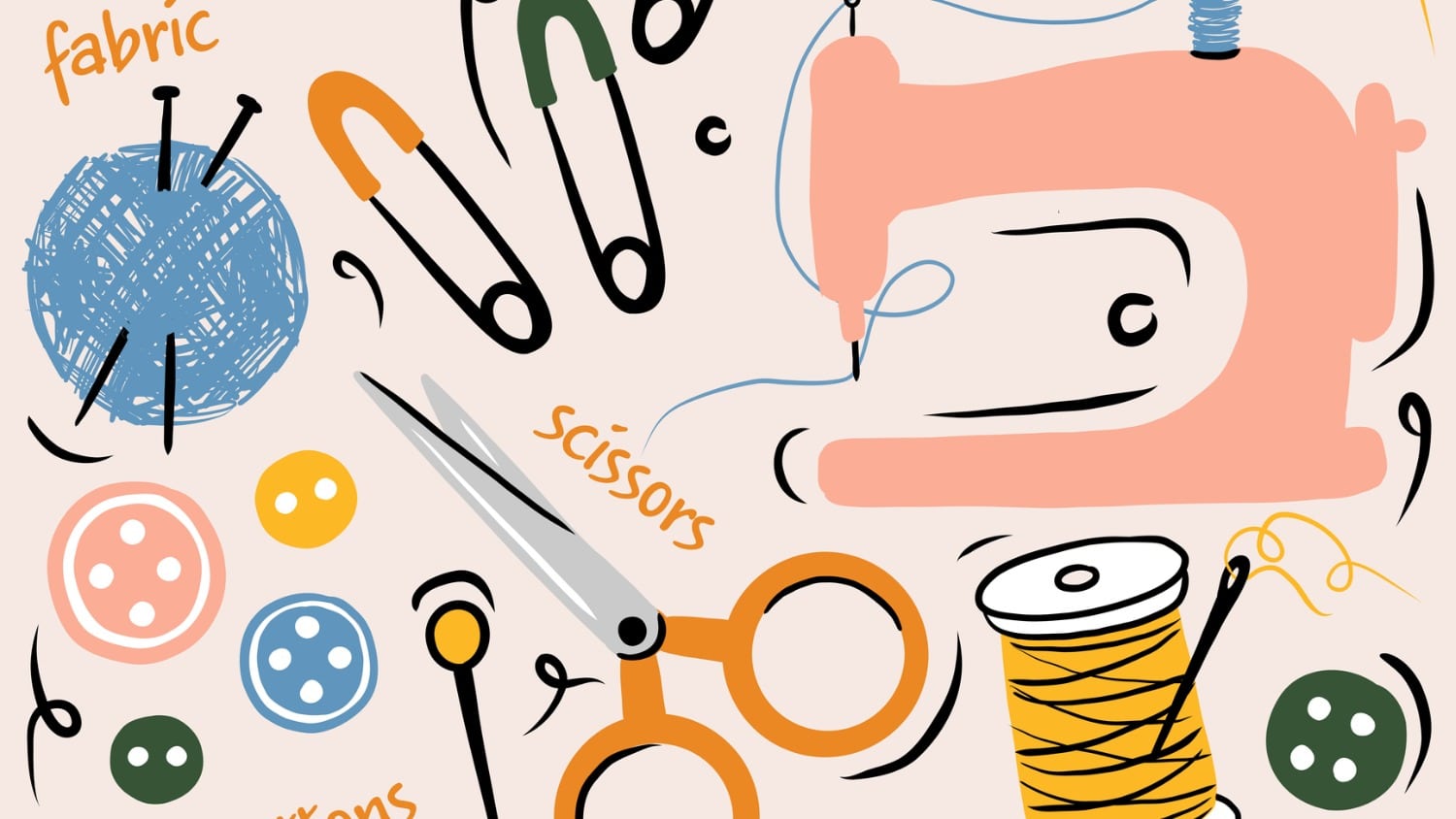
Crafting Glossary: An A-to-Z Guide to Common Crafting Words and Phrases
Welcome to our glossary of crafting terms! This guide is designed to help both beginner and experienced crafters confidently navigate the world of crafting. Whether you’re a crafting pro or a curious beginner looking to try something new, this glossary defines many common words and terminology used in crafting.
From acrylic paint to zentangle, this glossary covers a wide range of crafting topics to help you expand your knowledge and skills. Whether you’re hoping to learn something new or simply expand your crafting vocabulary, we invite you to explore our glossary of crafting terms and discover the many wonders of the crafting world.
Acrylic Paint
Acrylic paint is a water-soluble, synthetic polymer emulsion. It’s made from a combination of molecules and polymers that join to form this popular type of paint. Artists use acrylic paints for applications such as fine art, murals, crafts and toys.
Aida Cloth
Aida cloth is a type of fabric commonly used in cross-stitch. It’s an open-weave fabric that sometimes has a grid printed on it, which allows you to create patterns by following the lines.
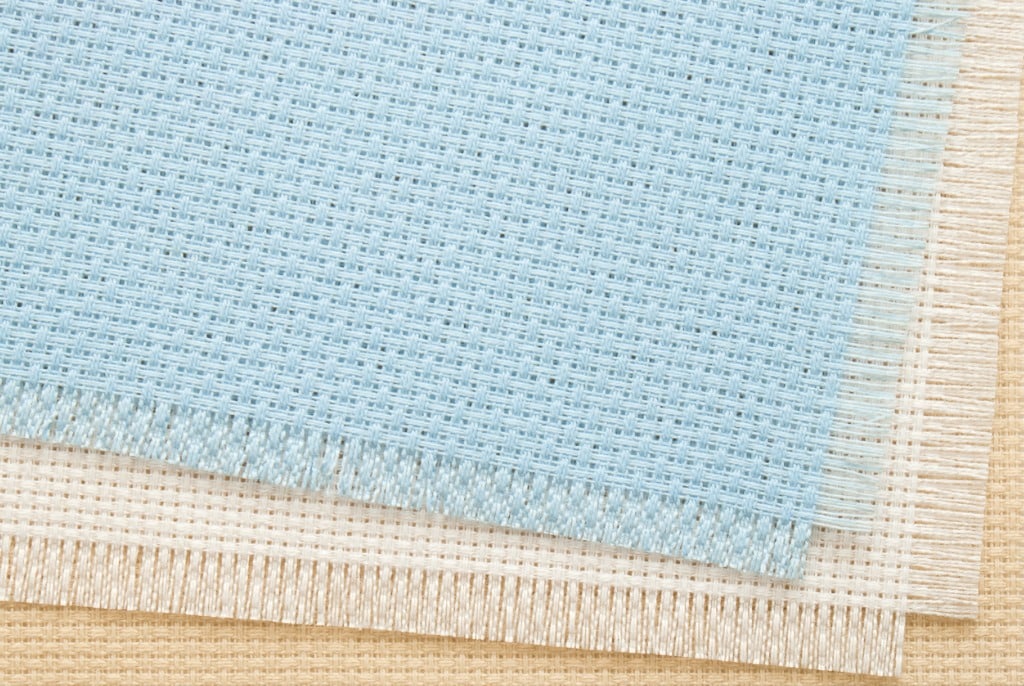
It comes in numerous “counts,” which refers to the number of holes per inch. For example, 16-count Aida has 16 holes for every inch of fabric. The size you need depends on the project and desired outcome.
Applique
Applique is a sewing technique in which a crafter sews fabric pieces onto other pieces of fabric. You can do this process by hand or machine. While machine applique is faster, many crafters prefer hand sewing with an embroidery hoop to ensure a nice, even edge around the design.
Batik
Batik is a dyeing technique that uses wax to resist dyes and create patterns. It was developed in Indonesia, where it was (and still is) used to decorate textiles and clothing.
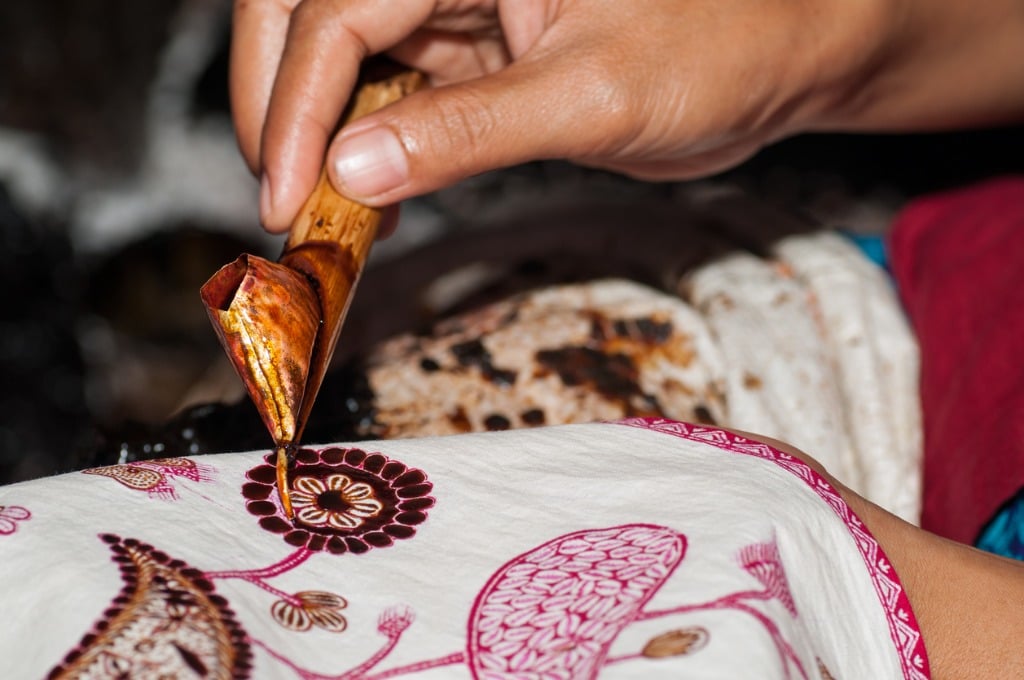
Artisans create batik fabric by drawing wax onto a cloth before dyeing it with indigo or other colors. When dipped in hot water, the wax on the fabric melts and leaves behind designs in negative space.
Bias Tape
Bias tape is a strip of fabric cut on the bias, or at an angle to the grain. It is used for many purposes, including hemming and finishing seams. You can also use bias tape to embellish clothing and home decor.
Bias tape is typically made of cotton, but some varieties are made of other fabrics like wool or silk. It comes in several widths to accommodate different types of projects.
Blocking
In knitting and crocheting, blocking is the process of shaping and setting a piece of knit or crocheted fabric to its final dimensions and removing irregularities in the stitches.
To block a piece, the crafter first dampens it with water or a steam iron and then pins it into shape on a blocking board or mat, using t-pins or blocking wires to hold it in place. The piece is then left to dry completely, often overnight or longer, so the fibers can settle into the new shape.
Blocking is also used to smooth out uneven stitches, open up lace patterns, and even out the tension across a piece of fabric. It is particularly important for sweaters, shawls and other garments that must fit properly and maintain their shape over time.
Bobbin
A bobbin is a small spool of thread or yarn that fits into a sewing machine’s bobbin case. The bobbin spins as you sew, unwinding thread and feeding it through the needle to create stitches on your fabric.
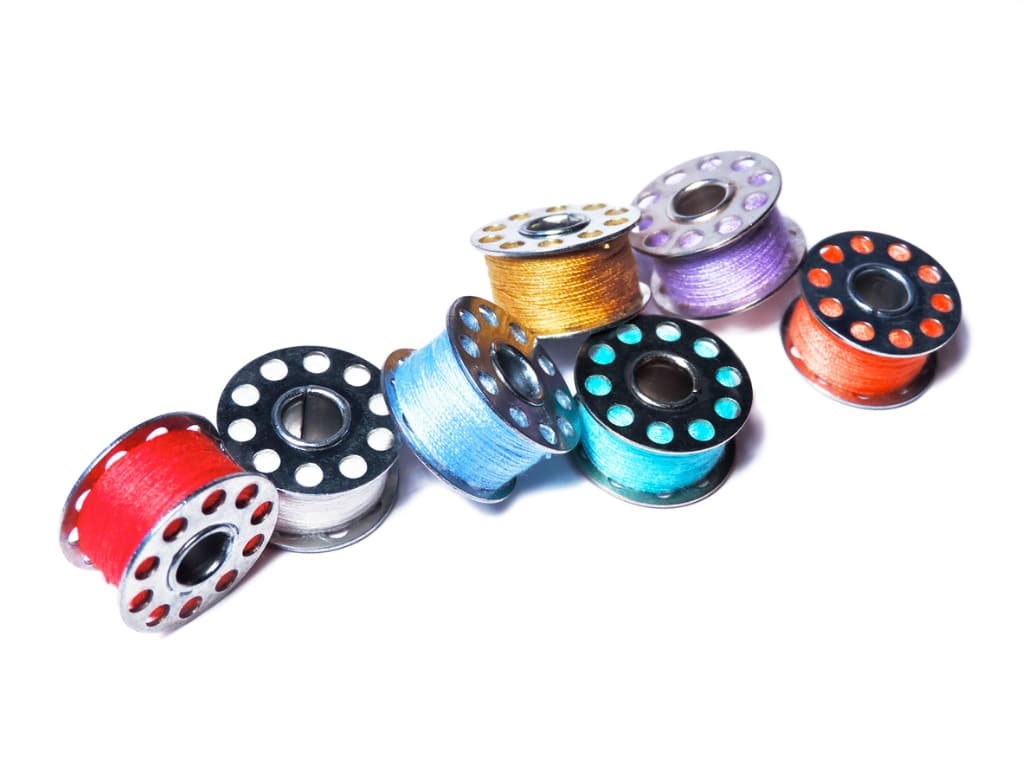
Bobbin Lace
Bobbin lace is a type of needlework that uses bobbins to create a lace-like fabric. The bobbins are usually wood but can also be made of ivory, plastic or metal. They have a hole at each end and hold the thread that is wound around them in different patterns to form lace.
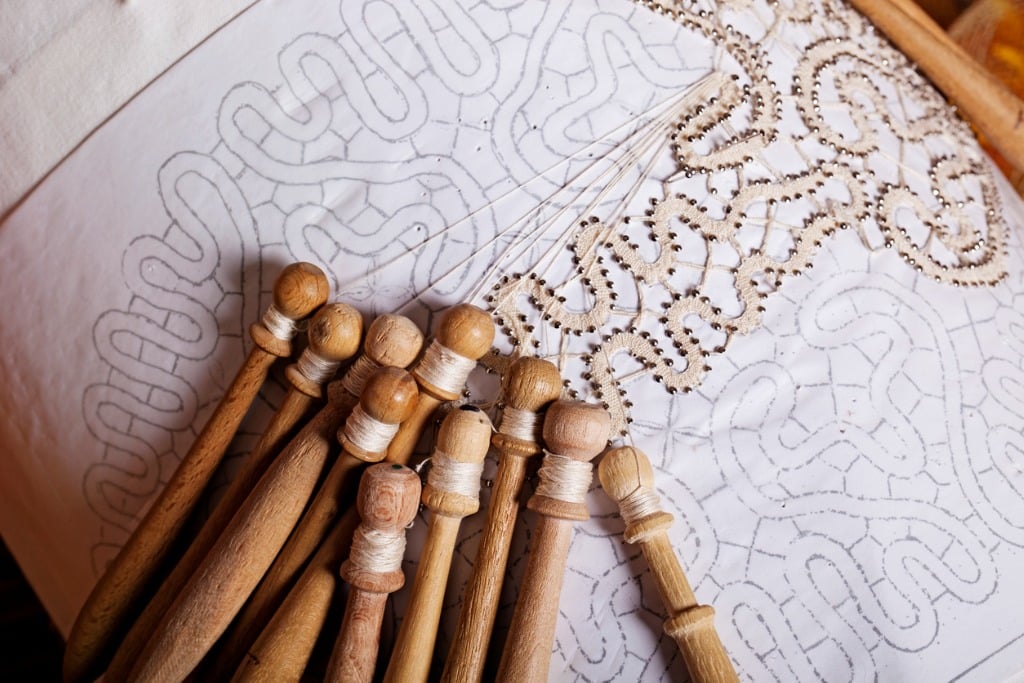
Bonding Agent
A bonding agent is the substance added to resin or epoxy to help it adhere to your project. The most common bonding agent is polyester resin. Bonding agents are available in two forms: liquid and powder. Liquid bonding agents are used with bottles of resin, while powdered ones are mixed into liquid epoxy before pouring into molds or applying directly onto wood surfaces.
Cable Needle
A cable needle is a knitting tool used to hold stitches while you work other stitches to form cables. They come in several shapes and sizes. The best type for you depends on what kind of project you’re working on and what kind of stitches you need to hold onto. If a knitting pattern requires a specific type of cable needle, this information should be provided.
Cardstock
Cardstock is a thick, sturdy paper for cardmaking and other crafts. White and ivory are the most common options, but cardstock comes in an endless array of colors and patterns.
Casting On
Casting on is the first step of any knitting project. It’s a simple process that involves using a needle and yarn to create a row of stitches, which you’ll use as the foundation for your pattern. You can cast on with either circular or straight needles, and the method used depends on the pattern.
Casting Off
Casting off is the process of removing a knitted piece from its needles. When casting off, make sure the last stitch on your right needle has two legs (or strands) hanging down – one from each side of the needle.
Move this stitch over one stitch and knit it through both legs together as one stitch with your left needle. This will form a long loop on your right needle. Repeat this process until you’ve cast off all stitches. The exact process may vary in certain patterns.
Chain Stitch
Chain stitch is a versatile crochet stitch. It’s an easy way to make a decorative border around your project, or you can use it to create a patterned design within your stitching. The chain stitch is worked from left to right and consists of making small loops across the fabric. Each loop will form one chain when it’s completed.
Circular Needles
Circular needles are long knitting needles connected by a flexible cord. You can use them to knit pieces that are too big for straight needles, or to knit in the round (instead of back and forth) on smaller projects like hats and sleeves. The main difference between circulars and straights is that when you work with circulars, your stitches will always be on the right side as you look at them.
Collage
Collage is a form of art that uses various materials to create an image. It can be a very personal and emotional process and a powerful form of self-expression. A collage can be made from virtually anything that can be adhered to a canvas or other background material.
Craft Knife
A craft knife is a tool with a razor-sharp blade, usually made of stainless steel, used to cut paper or other materials. The blade is held in place by a handle and typically has a protective cap to prevent injuries when the knife is not in use.
Crochet
Crochet is a technique for making fabric by interlocking loops of yarn or other materials using a crochet hook. It is one of the oldest fiber arts and creates textured patterns that crafters can easily customize by changing the hook size and type, yarn weight and stitch pattern.
Crochet Hook
A crochet hook is the tool used to create stitches in crochet. It’s a hook with a long handle to pull your yarn through a stitch you’ve just made. There are different kinds of crochet hooks, but they’re all roughly the same item: A long piece of metal, plastic or wood, with a hook at one end.
Cross-Stitch
Cross-stitch is a form of embroidery that involves creating X-shaped stitches in a patterned design on fabric. In cross-stitch, a crafter uses a counted thread fabric, such as Aida cloth, and embroidery floss or thread to create the design.
Decoupage
Decoupage is a crafting technique that involves decorating surfaces with cut-out paper images or other decorative elements which are then sealed with layers of glue or varnish. The word “decoupage” was derived from the French word “decouper,” which means “to cut out.”

Decoupage is used to decorate several surfaces, including wood, glass, metal and ceramics. It is commonly used to create decorative objects, such as boxes, picture frames and home decor items, and can be customized to fit any aesthetic or style.
Double-Pointed Needles
Double-pointed needles (DPN) are used to knit in the round. They have a pointed tip on both ends and are shorter than normal needles, so you can knit small circumferences quickly without weaving in ends. They are an excellent choice for sock knitters, and they come in sets of four or five.
Drop Spindle
Drop spindles are the simplest type of spindle for spinning raw fiber into wool, consisting of a whorl attached to a dowel or stick. The spindle is held in one hand and spun with the other hand as you draw out the fiber. Drop spindles can be made from various materials, including wood and plastic.
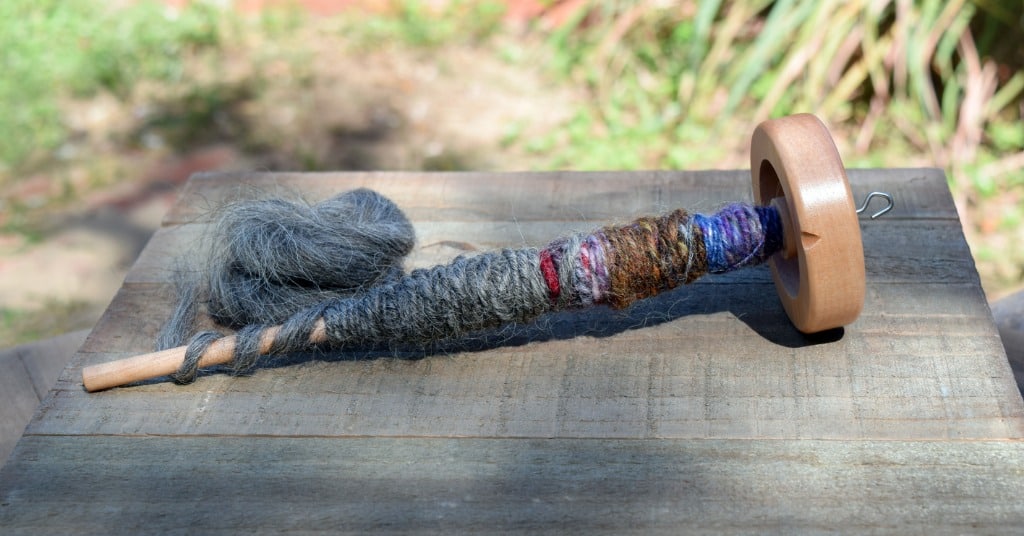
Embroidery
Embroidery is the art of decorating various fabrics using a needle and thread. Embroiderers may also incorporate things like pearls, beads, quills, lace or sequins in their work. Various types of embroidery have been around for centuries and can be seen on everything from clothing to home decor items.
Enamel Paint
Enamel paint is used to coat objects like metal and glass. It has a glossy finish and comes in many colors. The word enamel comes from the French word enameling, which means “to coat something with liquid glass.” Artists use enamel paints to create paintings on canvas or wood panels. Jewelers also use these paints to make jewelry with an artistic touch.
Epoxy
Epoxy is a glue made of two parts: resin and hardener. This adhesive type works well for repairing broken items like jewelry or glassware. Certain types of epoxy can also be poured into molds to create everything from jewelry to tabletops.
Floss
Floss is a type of thread used in needlework, such as embroidery and cross-stitch. It’s typically made from spun silk or linen fibers twisted together to form a single strand. Floss comes in many colors, and you can purchase it pre-wound on bobbins or cones at craft stores or online. It’s also available in unwound bundles.
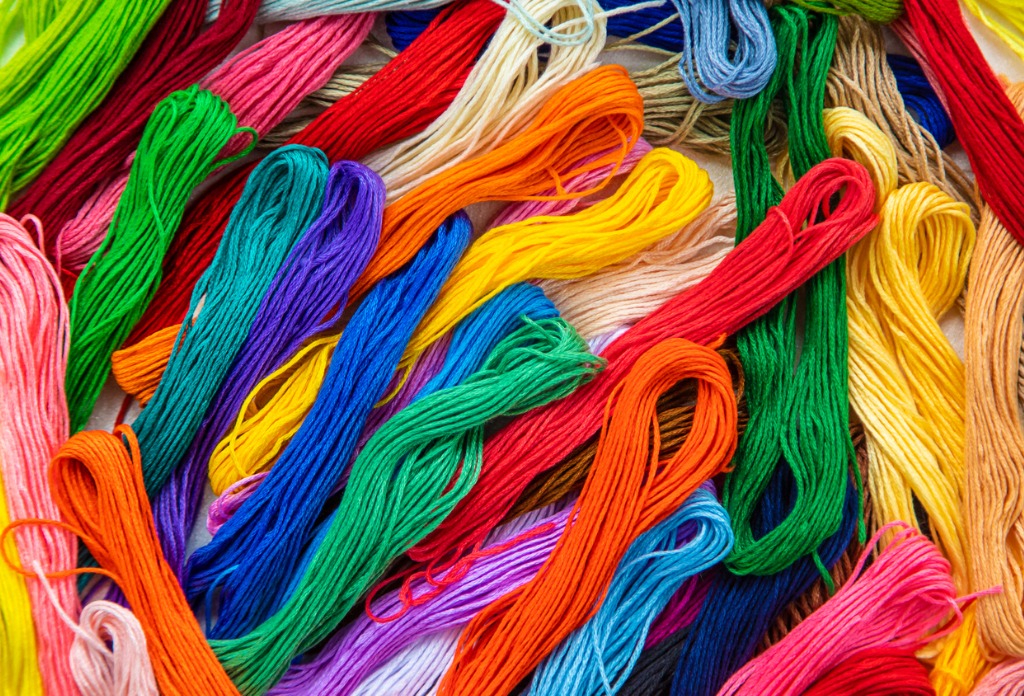
Fusible Interfacing
Fusible interfacing is a fabric specially treated to be heat-sealed to other materials. It can stabilize your project, add shape or create an invisible seam.
Garter Stitch
Garter stitch is a knitting technique in which you knit all stitches on the right side of the project and purl all stitches on the wrong side. This is the simplest of all types of knitting, but it can also be quite effective when you want to add texture and interest to your project.
Gouache
Gouache is a type of watercolor paint with a thick, opaque consistency. It’s often used for illustrating or painting with broad strokes and washes, making it useful for coloring large areas without leaving brush marks. Gouache dries to a matte finish, so it’s also great for adding details to your work without worrying about them getting lost in the wash of color from wetter paints like watercolors or acrylics.
Granny Square
A granny square is a crochet motif worked in the round to create a square shape with a textured, three-dimensional look. To create a granny square, the crocheter starts by making a small ring of chain stitches and then works a series of double crochet stitches into the ring, along with chain stitches, to create corners.
This process is repeated, with each round of stitches worked into the spaces between the stitches of the previous round, creating a square with multiple rounds and a raised lacy texture. Granny squares are used in blankets, scarves and more.
Heat Press
A heat press uses high temperatures to transfer images onto fabric, ceramic and other materials. The image is placed on top of the material being pressed, and then the heat press is pushed downward to transfer the image onto the surface below.
Heat Transfer Vinyl
Crafters use heat transfer vinyl, also known as HTV, to apply designs to garments using a heat press. It’s often used for sports teams, logos and other large designs.
Hook and Loop Tape
Also known as velcro, hook and loop tape is a popular fastener in crafting. It’s made from two different woven fabrics, with one side having tiny hooks and the other having tiny loops. When you press them together, the hooks and loops join to hold both pieces in place. It’s available in sew-on and adhesive varieties, making it ideal for various projects.
I-Cord
An I-cord is a narrow tube of knitting that is typically used as a decorative edging or as a drawstring. It can also be used to create straps for sleeveless garments. It is worked in the round using double-pointed needles or a circular needle and is made up of just a few stitches.
To create an I-cord, the knitter casts on a small number of stitches, usually between two and four, and then works them in the round, pulling the yarn tightly at the beginning of each row to create a small, uniform tube. The stitches are typically worked in a basic knit stitch, although variations such as garter or seed stitch can create a different texture.
Iron-On Transfer
An iron-on transfer is a type of decal that can be applied to fabric by simply ironing it onto the surface. These transfers come in many designs, shapes and sizes, so you can use them for all sorts of projects ranging from clothing or accessories to home decor items like pillow covers or wall art.
Jute
Jute is a long, soft and shiny vegetable fiber derived from the stem of the jute plant, which is primarily grown in countries like Bangladesh, India and China.
It is a versatile material used in a variety of crafting projects. It is commonly used in textile and fiber arts, such as weaving, macrame and embroidery, and can be used in home decor projects, such as rug making and wall hangings.
One of the advantages of jute is that it is a strong and durable material that can withstand heavy wear and tear. It is also an eco-friendly option, as it is a renewable and biodegradable fiber that can be sustainably harvested.
Knitting
Knitting is the process of creating blankets, garments, accessories and more by interlacing loops of yarn using two or more needles. The loops are usually made with one needle and then attached to a second needle to form a stitch. Knitting is done by hand or machine. While machine knitting is faster, many people prefer the appearance and feel of hand-knitted items.
Knitting Needles
Knitting needles are the most common tools for creating knitted fabric. They come in different lengths and sizes, with the shorter ones used for smaller projects and the longer ones used for larger projects. Knitting needles are usually made of metal, wood or plastic, though other materials, such as bamboo, can also be used.
Loom
A loom is used to weave fabric. The major parts of a loom are the warp beam, which holds the warp threads under tension; the harnesses or heddles that raise alternate sets of warp threads so that they can be interlaced with weft; and the shuttle, which carries the weft from one side to the other during weaving. The yarns are usually pressed together using an adjustable fabric cover called a cloth beam or batten when not in use. Loom construction varies between different cultures, periods and applications.

Masking Tape
Masking tape is a pressure-sensitive adhesive tape commonly used in various crafting projects. The tape is made of thin and easy-to-tear paper, which is coated with a low-tack adhesive that allows it to be removed easily without damaging surfaces or leaving behind any residue.
Masking tape is often used in painting and other DIY projects to create clean and straight edges. It can be applied to walls, furniture and other surfaces to mask off areas that should not be painted, such as baseboards or trim. This tape is also used to create stencils or templates for various crafting projects.
In addition, masking tape is widely used in paper crafts, such as scrapbooking and card making. It can be used to hold paper and other materials in place while they are being cut or glued and can also be used to create clean and straight borders around paper edges. There is even colorful masking tape you can use in your designs.
Matte Medium
Matte medium is a liquid that can be added to paint to make it matte. It’s often used in conjunction with gloss medium to create various effects in paintings, such as adding texture and depth.
Mixing matte medium into your paint makes it more opaque and less shiny. This makes it ideal for creating shadows or making an object look like it has been painted on top of another object rather than being part of the same surface (e.g., if you want something – like a portrait – to appear as though it were hanging on the wall).
Mod Podge
Mod Podge is a liquid adhesive that can be used for several applications. Crafters often use it for decoupage and scrapbooking, but it also works great for making stickers and other projects. Mod Podge has many different varieties, including matte, glossy and multi-surface. Water-resistant Mod Podge is another popular option.
Needle Felting
Needle felting is a form of needlecraft that uses barbed needles to interlock wool roving to form images or three-dimensional objects. In needle felting, the crafter starts with a small amount of wool roving or batting and uses the needle to repeatedly poke the fibers, causing them to tangle and compact into a solid piece. The needle has tiny barbs that catch the fibers and pull them into the surrounding fibers, creating a firm and dense felted material.
Read more here IS NEEDLE FELTING ON YOUR HOBBIES BUCKET LIST? LET’S GET STARTED!
Needle Minder
A needle minder is a small, magnetic tool that holds needles and pins in place while working on a needlework project. To use a needle minder, the crafter places a small magnet on the back of the fabric they are working on and a corresponding magnet on the front of the fabric. Some needle minders can also be pinned on. The crafter can then place their needle on the front magnet when not using it, ensuring that it stays in place and is easily accessible when needed.
Needle minders are particularly useful for cross-stitch, embroidery and other types of needlework. They help prevent lost or misplaced needles and make it easier to keep track of which needle is being used for each part of the project.
Nylon Thread
Nylon thread is a synthetic, heavy-duty thread used in sewing projects. It’s available in many colors and can be used for both machine and hand sewing. Nylon thread is even strong enough to be used in outdoor gear like backpacks or tents, but it’s also useful for making regular apparel because it doesn’t fray easily. Nylon threads are made from polyamide (PA), a type of plastic polymer developed by DuPont chemist Hilary Horan in 1938 while searching for stronger fibers to use as bulletproof vests during World War II.
Oil Paint
Oil paint is made by combining pigment with a drying oil, typically linseed oil. Oil paint is known for its slow-drying properties, which allow artists to work with the paint over a longer period of time and blend colors together with greater ease.
Oil paint is a popular medium among artists due to its versatility and range of applications. It is perfect for realistic portraits, landscapes and still lifes, as well as abstract and experimental works. However, oil paint requires more drying time and is more challenging to work with than other types of paint, making it more suitable for experienced artists.
Origami Paper
Origami paper is a type of paper that is specifically designed for the art of paper folding. Origami paper is typically thin, crisp and comes in many beautiful colors and patterns to allow for creative expression. It is usually coloured or patterned on one side, and the other side is left blank or features a solid color. This allows for different effects in the finished design as the artist chooses which side to display to create the desired effect.
Origami paper is typically square and comes in many sizes, ranging from small squares suitable for miniature origami to larger sheets for more complex designs. The paper is often made from traditional fibers such as bamboo, mulberry, or hemp, although modern origami paper is often made from other materials like cotton or synthetic fibers.
Paper Mache
Paper mache is a technique of creating three-dimensional objects by layering strips of paper or other materials over a form and then coating the layers with a mixture of glue and water or flour and water to create a hardened shell.
To create a paper mache object, the crafter typically starts by creating a base form using materials such as balloons, wire or cardboard. They then tear or cut paper strips and dip them into a mixture of glue and water or flour and water. The wet strips are then placed over the form, building up multiple layers until the desired thickness and shape is achieved. Once the layers of paper mache are dry, the crafter can sand and paint the surface to achieve the desired finish.
Pinking Shears
Pinking shears are scissors that have serrated edges. The serrations create a decorative effect by cutting a zig-zag pattern. You can use pinking shears to trim seams and edges before sewing them together, or you can use them for cutting paper and other thin materials.
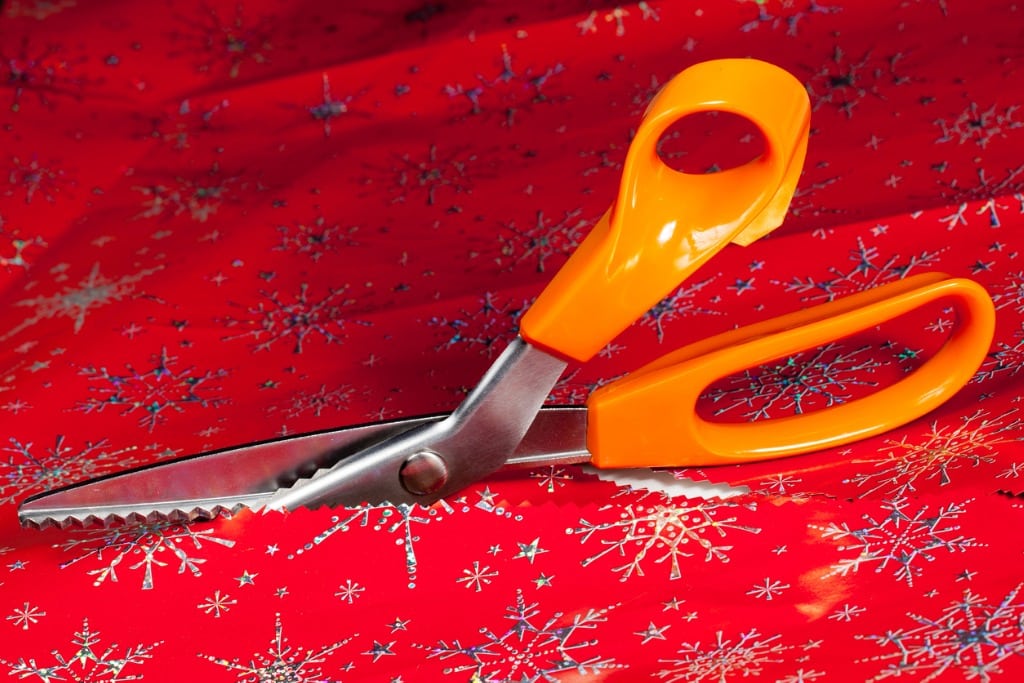
Polyester Fiberfill
Polyester fiberfill is a synthetic material used as stuffing for dolls, pillows or other craft projects. Fiberfill is made from polyester fibers that are loosely woven into one large piece. It is one of the most affordable filler options and easy to work with.
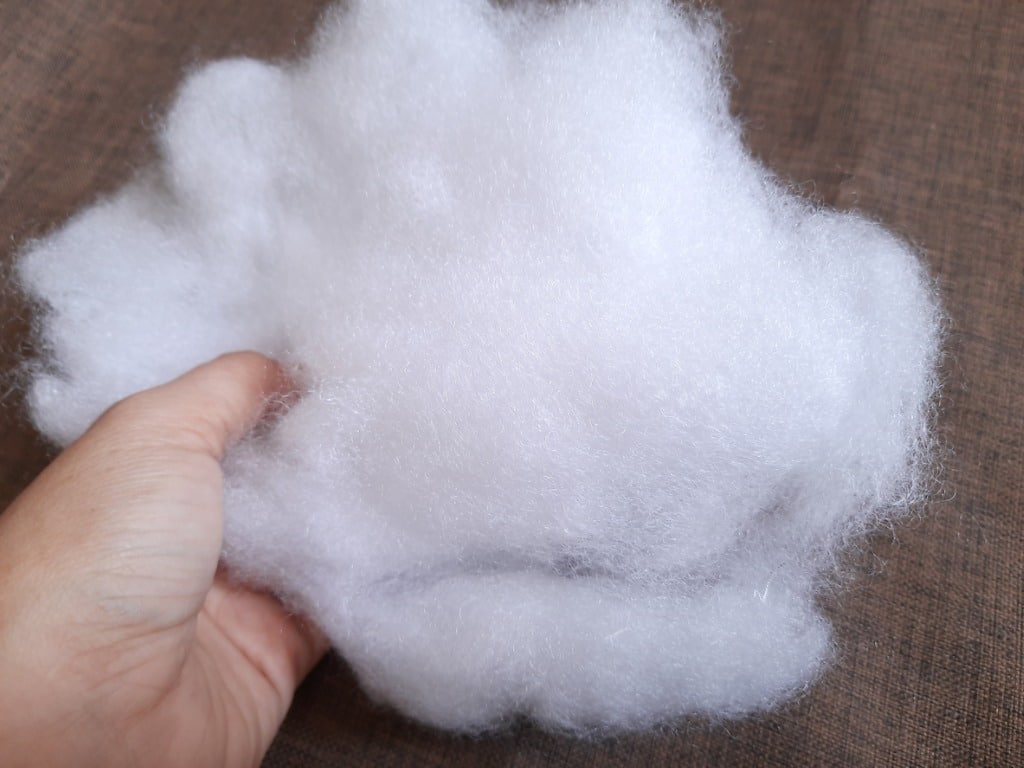
Presser Foot
A presser foot is a device attached to a sewing machine that presses down on the fabric, holding it in place while you sew. There are many types of presser feet, each with a specific purpose. For example, if you’re sewing straight lines (like seaming), you’ll use a walking foot. If you’re sewing curves or embroidery stitches, a darning plate will help keep those stitches even and smooth.
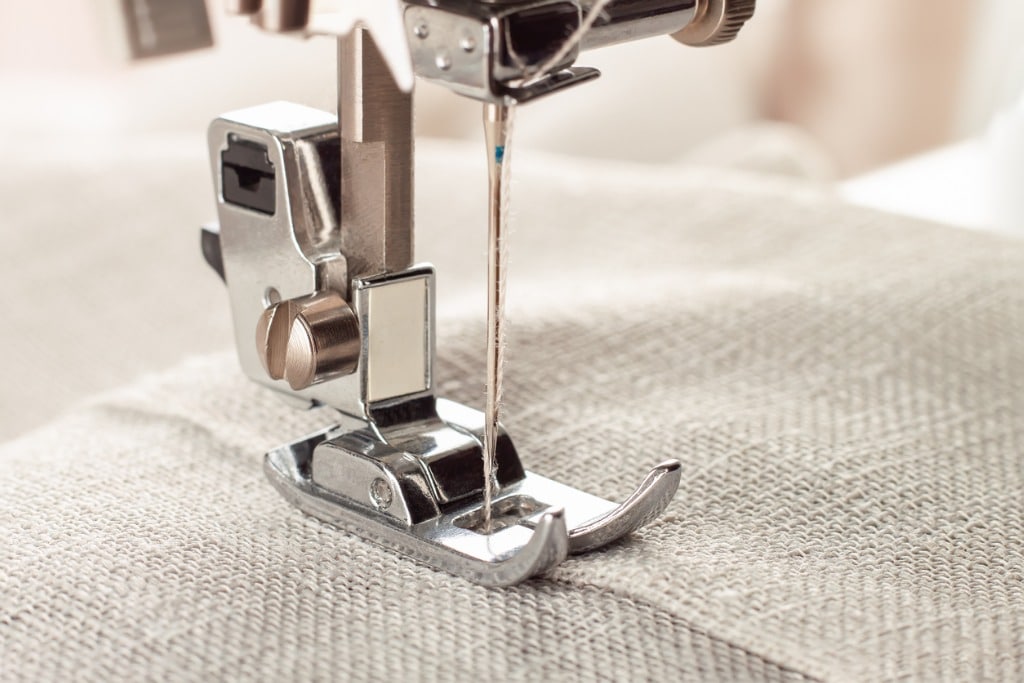
Printmaking
Printmaking is the process of making prints from a plate or matrix, usually by creating an impression on paper. It can be used to reproduce texts and images and for decorative purposes.
Quilting
Quilting is a technique that involves sewing multiple layers of fabric together to create a thicker, padded material. The layers are typically held together with stitches that pass through all layers of fabric, creating a decorative pattern. Quilting is done by hand or machine and involves several steps. The first step is choosing fabrics for the top layer of the quilt, which is usually pieced together using a variety of colors and patterns to create a desired design.
The next step is adding the middle layer, known as batting, which provides insulation and thickness to the quilt. Batting is made from various materials, such as cotton, wool, or synthetic fibers, and is available in several thicknesses and densities to suit different needs.
Finally, the bottom layer of the quilt, known as the backing, is added. This layer is typically made from a single piece of fabric that is large enough to cover the entire quilt and can be plain or patterned.
Rickrack
Rickrack is a type of decorative trim often used in sewing and crafting. It is a narrow, zigzag-shaped braid or ribbon that can be made from a variety of materials, such as cotton, polyester, or lace.
Rickrack is typically used to embellish clothing, bedding, and home decor items. It is often applied to the edges of garments, such as sleeves, hems and collars, to add a pop of color and texture. You can also use rickrack to create decorative accents on items like curtains, pillowcases and tablecloths.
Rotary Cutter
A rotary cutter is used in sewing, quilting and other crafts to cut fabric or other materials quickly and accurately. It consists of a circular blade attached to a handle and is designed to cut through multiple layers of fabric at once.
Rotary cutters come in several sizes, with larger blades suitable for cutting through thicker materials or multiple layers of fabric at once and smaller blades ideal for more delicate work. The blades are typically made from high-quality steel and can be sharpened or replaced as needed.
Sewing Machine
A sewing machine is a device used to make sewn objects. This process is done by passing the material back and forth through a loop of thread at high speed using one or more needles attached to the machine’s needle bar. You can adjust the stitch length by changing the needle(s) position during each cycle.
Sewing Needle
Sewing needles are a common tool for craftspeople. They are used to sew pieces of fabric together or create stitches independently. Also known as hand needles, sewing needles come in many shapes and sizes for various uses. Some sewing needles have a blunt tip, while others have a sharp one. Most sewing needles are metal, but some are plastic.
Silk
Silk is a natural fiber produced by the silkworm. The fiber is known for its softness, luster and strength and has been used for centuries in textile production and other crafts.
Silk fibers come from the cocoons of the silkworm, which are harvested and processed to remove the outer layer and extract the silk fibers. These fibers are then spun into threads, which can be woven, knitted or otherwise manipulated to create a wide range of fabrics and textiles.
Silk is renowned for its luxurious texture and appearance and is often used in high-end fashion and home decor. It is prized for its ability to drape beautifully and its natural sheen, which gives fabrics a lustrous, reflective quality.
Spray Adhesive
Spray adhesive is a type of glue applied by spraying it onto two surfaces and then pressing or rubbing them together. It’s common in crafting because it can bond materials that would normally not stick to each other, such as paper and fabric. Spray adhesives come in a variety of forms, including aerosol cans or pump bottles.
Stamping
Stamping is the process of using stamps to create images or text on paper. Stamps come in many shapes, sizes and designs. They can be made of rubber, soft plastic, wood or metal.
Stenciling
Stenciling is a decorative technique that involves using a template, or stencil, to apply a design or pattern to a surface. Stencils can be made from various materials, including paper, plastic and metal, and can be used on many surfaces, including paper, walls, fabric and furniture.
Straight Pins
Straight pins hold fabrics, patterns and other materials in place. They consist of a slender metal shaft with one pointed end and a flat, round head on the other end. Straight pins are typically used to temporarily hold fabric pieces together while sewing or quilting and to secure patterns to fabric or other materials. They can also be used to mark fabric for cutting or other alterations.
Straight pins are available in a range of sizes and materials, with longer pins suitable for thicker fabrics and shorter pins suitable for more delicate work. They can be made from steel, brass or other metals and may be coated with plastic or other materials to make them easier to handle.
Twine
Twine is an incredibly versatile material used for various craft projects. You can use it to make jewelry, like bracelets and necklaces, or even place it in your home as decoration. Twine comes in many different colors and textures, so you can easily choose the one that best suits your needs.
Watercolor Paint
Watercolor paint is a type of paint that is made by combining pigments with a binder, usually gum Arabic, and mixing the resulting paste with water. The paint is typically applied to paper or other absorbent surfaces using a brush and can be layered to create numerous effects.
Watercolor paint is known for its transparency, making it ideal for creating delicate, luminous washes of color. The paint can be mixed with more or less water to create a range of hues, from light and airy to deep and intense. Watercolor paints come in countless colors, from bright and vivid to muted and earthy. They can be used to create a wide range of effects, from loose and abstract to tight and realistic and are often used in landscape, still life and portrait painting.
Watercolor paint is popular among artists, hobbyists and students because of its ease of use and versatility. It can be used on many surfaces, including paper, canvas and board, and blended with other water-based mediums like ink or gouache.
Yarn
Yarn is a continuous strand of fibers used for knitting, crocheting, weaving and other textile crafts. It is made from a variety of natural and synthetic fibers, including wool, cotton, acrylic and polyester, and can vary in thickness, texture and color.
Creating yarn typically involves spinning fibers into a long, continuous strand using a spinning wheel or drop spindle. Yarn comes in several weights and thicknesses, from fine lace-weight yarn to bulky yarn. It is used to make everything from cozy blankets and warm scarves to intricate lace shawls and colorful amigurumi.
Zentangle
Zentangle is a method of drawing structured patterns and designs to create intricate artwork. The technique involves using a pen or other drawing tool to create repetitive patterns within a defined space. Developed in the early 2000s, zentangle is a relatively new art form. The technique is inspired by traditional meditative practices, such as yoga and tai chi, and promotes mindfulness and relaxation.
Zentangle patterns can be simple or complex and often incorporate curves, lines, dots and circles. The technique emphasizes the process of creating the artwork rather than the final product and encourages artists to focus on the present moment and let go of any expectations.
Let’s Have a Conversation:
Which of these arts/crafts and techniques have you tried? Do you have a favorite? What else would you like us to add to this glossary?
Tags Arts and Crafts





